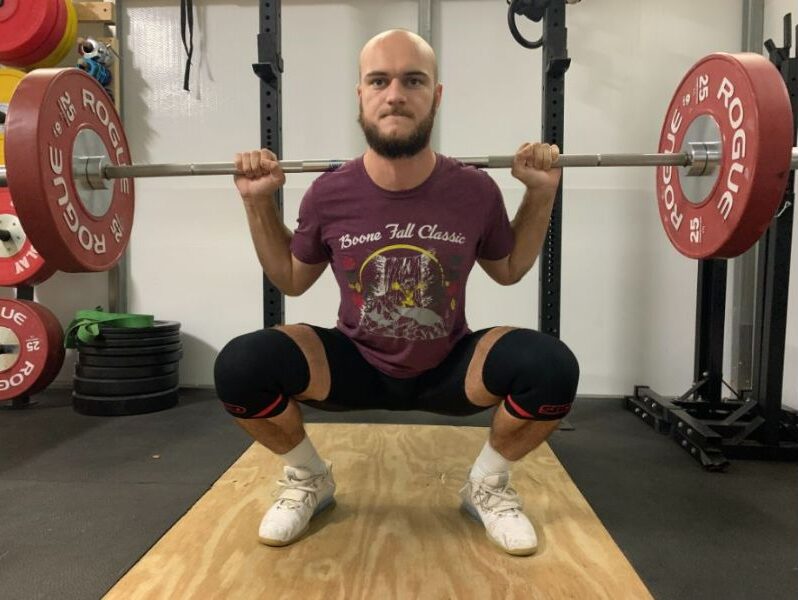We test and review fitness products based on an independent, multi-point methodology. If you use our links to purchase something, we may earn a commission. Read our disclosures.
Squats, love them or not, are arguably the king of all exercises. Except for the deadlift, the squat exercise trains the most muscles and is one exercise you can load up heavy weight for juicy muscle-building gains. But which squat will you choose for your squat workout? Don’t worry; we’ve got your back here at Garage Gym Reviews.
RELATED: The Deadlift: Muscles Worked, How To Do It, And Benefits
This certified personal trainer will dive into everything from the back squat to the dreaded Bulgarian split squat for all your squatting needs. You could say it’s a one-stop squatting shop—see what I did there?
We’ll get into the benefits, proper form tips, and what muscles squats work so you will be more informed of what the squat can do for you.
Are you ready to squat? Then let’s go.
Medical disclaimer: This article is intended for educational and informational purposes only. It is not intended as a substitute for medical advice. For health advice, contact a licensed healthcare provider.
How to Do The Back Squat Workout
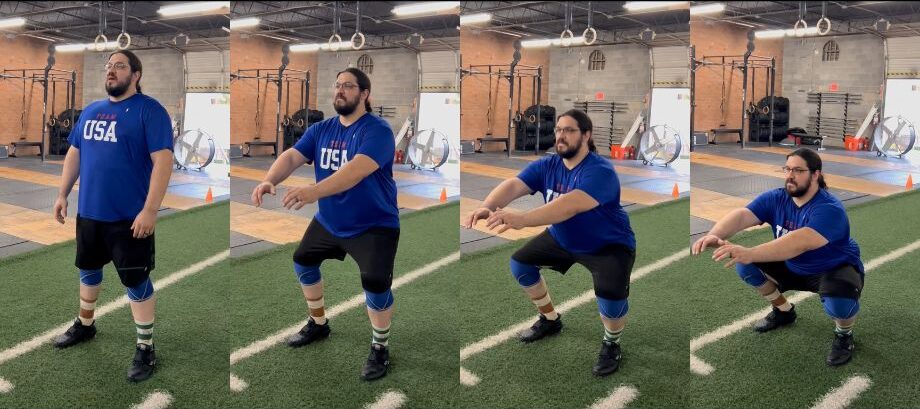
Here are step-by-step instructions for performing the barbell back squat with proper form.
- While in the squat rack, step under a barbell and either get it in a low- or high-bar position and unrack the barbell.
- Use a grip width that allows you to get your elbows underneath the bar, unrack it, and take three steps back.
- Get your feet in your preferred squat position.
- Pull the barbell down into your shoulders to create upper back tension.
- With your chest up and shoulders down, take a deep breath in and squat to a comfortable depth for you.
- Push your feet through the floor, finish with your glutes at lockout, reset, and repeat.
RELATED: Best Olympic Barbells
Short Note On High- And Low-Bar Squats
The barbell position on your back is the biggest difference between the low- and high-bar squats. The high bar sits on top of your shoulders around the bottom of your neck, and the low barbell position sits across your shoulder blades. It’s a matter of personal preference, each with pros and cons.
During the eccentric contraction with the low-bar squat, the gluteus maximus and biceps femoris (hamstrings) are more activated during the low-bar squat than the high-bar squat1. The rectus femoris, vastus lateralis, and vastus medialis (three of the four quad muscles) are also more engaged during the low-bar squat.
Typically, the low-bar squat is more effective for building muscle and strength because this variation allows you to use the most load. But low-bar squats need more shoulder mobility, and if this is an issue, you’re better off going with the high-bar variation. If you’re an Olympic weightlifter or CrossFitter, the high-bar squat is an effective variation to build strength for more complex movements.
RELATED: Improve Your Fitness With The Best Mobility Exercises
8 Squat Workout Variations
Here are eight squat variations for your squatting pleasure. Choose wisely.
Front Squat
Why do it: The anterior position of the barbell is easier on the lower back and has a great carryover to improve the Olympic lifts.
How to do it:
- Get the barbell into the front rack position whether you’re using a front rack, cross-over grip, or straps
- Keep your shoulders down, chest up, and elbows high.
- Then take three steps back from the rack and get your feet in your preferred squat stance.
- Drop into a squat keeping your back neutral while minimizing the forward lean of the upper body.
- Once you reach your preferred depth, push your feet through the floor to return to the starting position.
- Reset and repeat.
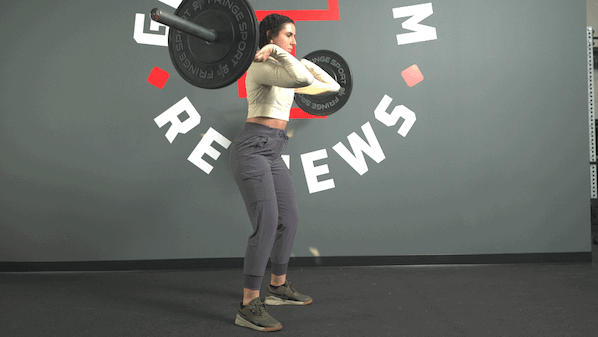
Goblet Squat
Why do it: The goblet position acts as a counterbalance to allow the lifter to get into a proper squat position, making it a great option for beginners.
How to do it:
- Hold the top portion of the best dumbbell with both hands by your chest and underneath your chin.
- Engage the upper back by getting your shoulders down and chest up.
- Get your feet in your preferred squat position.
- Squat between your knees until your elbows touch the inside of your thighs.
- Drive your feet through the floor, return to the starting position, reset, and repeat.
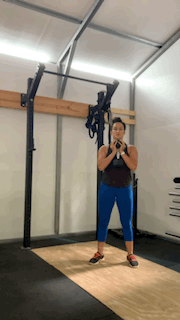
Safety Squat Bar Squats
Why do it: Using the best safety squat bar can help reduce the strain on your shoulders while still allowing you to squat heavy weight in the high-bar position.
How to do it:
- Grip the handles of the safety bar, and put the barbell in the high-bar position.
- Breathe in and brace your core and unrack the bar.
- Take three steps back, and place your feet in your preferred squat position.
- Squat to your preferred depth.
- Push your feet through the floor, return to the starting position, reset, and repeat.
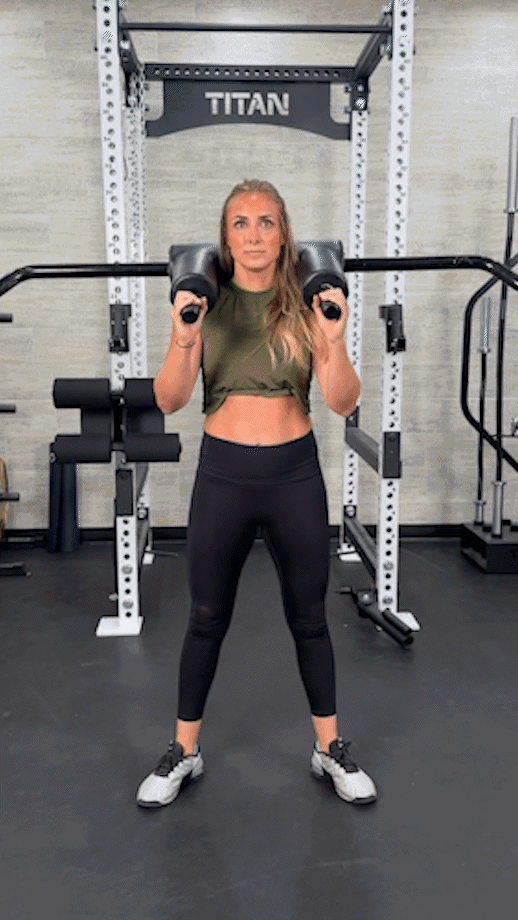
Bodyweight Squat
Why do it: The bodyweight squat is a dynamic warm-up exercise for experienced squatters and is a movement beginners should nail before moving to loaded variations.
How to do it:
- Stand upright with your shoulders down and chest up.
- Place your feet in your preferred squat position.
- Squat until your thighs are parallel to the floor.
- Push your feet through the floor to return to the starting position.
- Reset and repeat for desired repetitions.
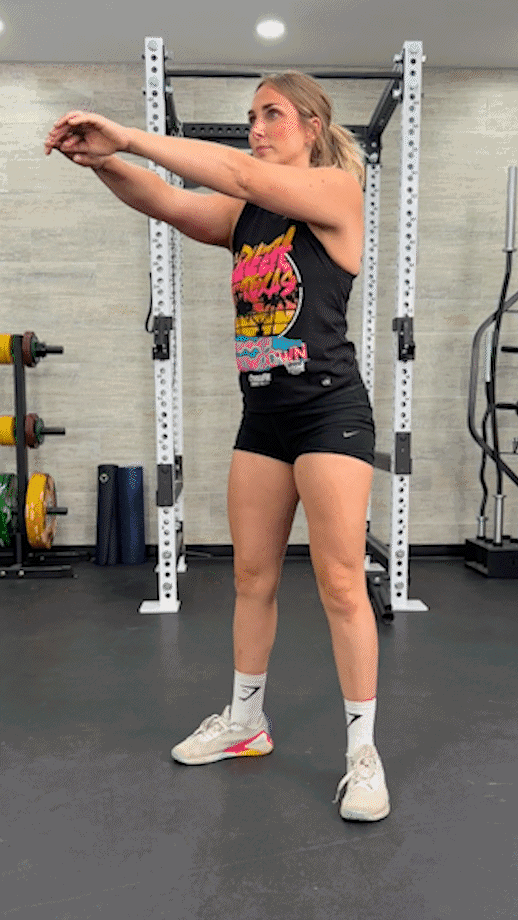
Box Squat
Why do it: Squatting to a box has two big benefits: It reduces the range of motion for those who find the lower depth of the squat painful for their knees, and the reduced ROM gives you the potential to use more weight.
How to do it:
- Set up a plyometric box or the best weight bench behind you.
- Unrack your barbell in the low or high-bar position on your back and set your upper back and feet.
- Take three steps back, and with your shoulders down and chest up, squat until you’re sit on the box.
- Pause for a beat, push through your feet to return to the starting position, and reset and repeat for reps.
Note: There are a few variations of the box squat—this is one.
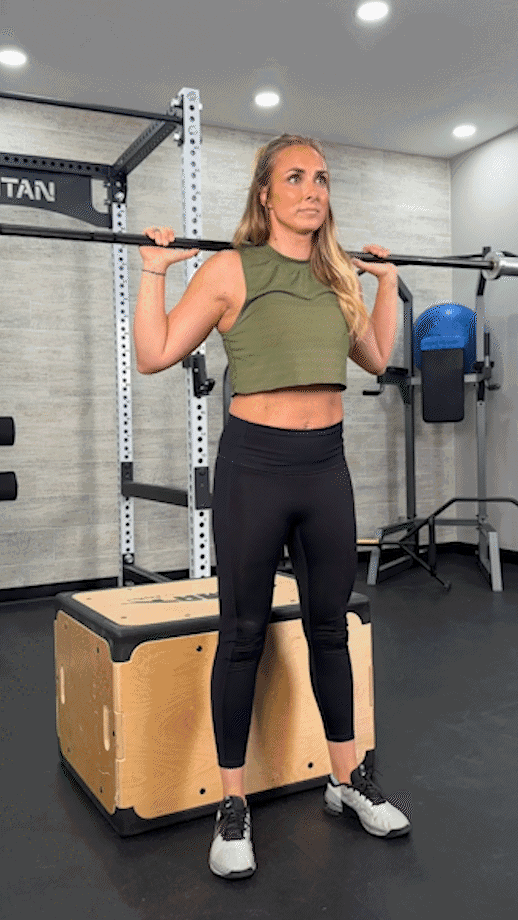
Bulgarian Split Squat
Why do it: Otherwise known as the elevated split squat, the Bulgarian split squat helps reduce strength imbalances between sides and improves leg drive and hip mobility.
How to do it:
- Start with an elevated surface behind you, like a weight bench.
- Place your right foot on the bench and your left foot in your preferred stance.
- Grip the floor with your foot and drop your right knee towards the floor to your preferred depth.
- Push your left foot through the floor to squat back up.
- Regain balance and reset and repeat.
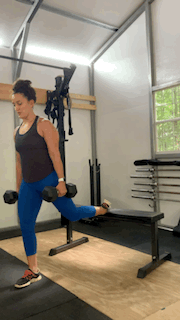
Pistol Squat
Why do it: The pistol squat is arguably the hardest squat variation, but being able to do it means your balance and coordination are top-notch.
How to do it:
- Stand on your right leg with your left leg in front of you and left thigh extended.
- Grip the floor with your right foot to center your balance.
- Engage your core and get your shoulders down and chest up,
- Hinge your hips forward and squat down as low as you can.
- Drive your right foot through the floor to squat up, reset, and repeat.
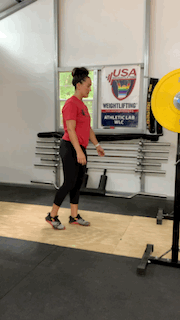
Dumbbell Sumo Squat
Why do it: The dumbbell sumo squat is one the easiest weighted variations of the squat because the load is closer to the working muscles. This squat is great for beginners and for doing more reps for meaty leg gains.
How to do it:
- Begin in a wider-than-shoulder-width stance with a dumbbell on the floor between your legs.
- Squat down and grip underneath the dumbbell with both hands.
- Get your shoulder down and chest up and drive your feet through the floor and squat up.
- Slowly squat until the dumbbell touches the floor, and repeat.
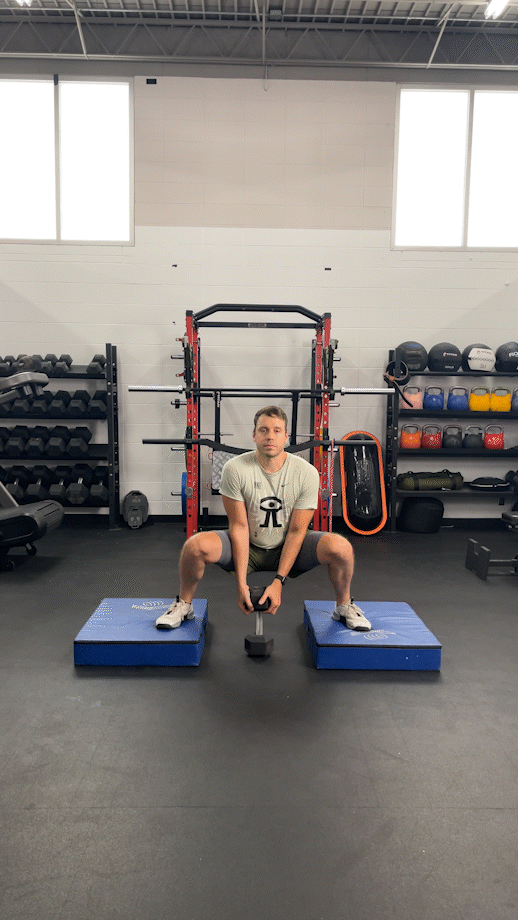
Common Squat Mistakes
There are many nuances regarding squat technique and thousands of differing opinions on proper form. This subject is an article by itself, but we’ll focus on the big rocks here for you to get the best out of your squat workout. Here are three common mistakes with the squat.
Squatting Over Your Knees
Although the squat is a knee-dominant exercise, you don’t start the movement with your knees. The purpose of the squat is to sit between your knees, not over your knees. The knees and hips flex simultaneously, not just one or the other.
Fix it: Try the box squat if you start your squat by bending your knees and not your hips. Having a reference point cleans up your squat form.
RELATED: Best Knee Sleeves
Knees Collapsing In
During the squat descent, your knees should go outwards over your second toe and not collapse in. If you find your knees buckling during the squat, it is often a sign that your glutes need work.
Fix it: A common cue is to push your knees out, which can also be problematic. Instead, this certified personal trainer likes to use a mini band around the knees to encourage pushing the knees out.
RELATED: How to Squat with Resistance Bands
Heels Coming Off The Ground
Some lifters lift their heels during the eccentric, shifting the weight forward, making the movement harder on their knees. Raising the heels is a sign your hip and ankle mobility needs work.
Fix it: Curl your toes upward when squatting to force you to use your heels. Also, perform some ankle mobility exercises during your warm-up to improve your ankle mobility.
Muscles Worked By Squat Workouts
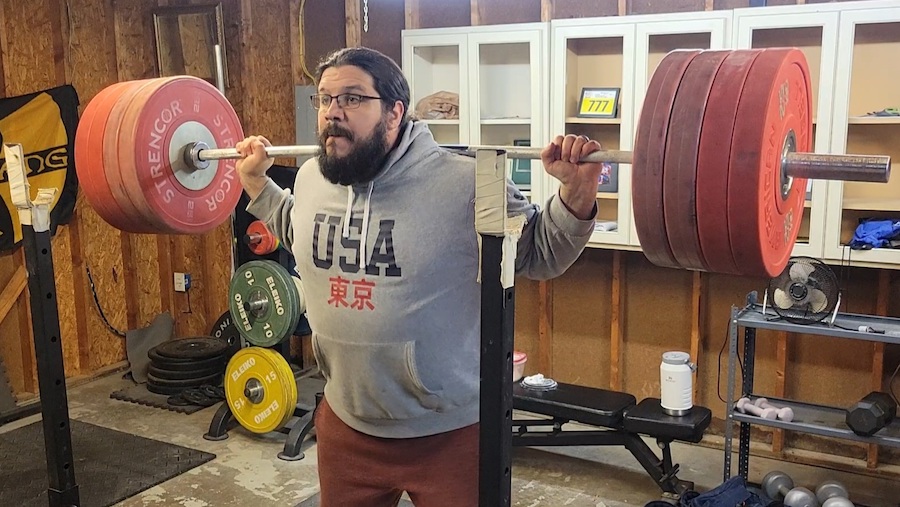
Here are the primary muscle groups you’ll be training during the barbell back squat:
- Quadriceps: Flex and extend the knee.
- Adductors: Assist with hip flexion and extension.
- Glutes: Work with the quads to raise from the squat and extend the hip.
- Calves: Planterflex the ankle and gives you a solid base to squat from.
- Lower back: Works isometrically to keep your spine neutral.
- Upper back: Gives the barbell somewhere to sit and prevents excessive forward lean in the squat when engaged.
- Anterior core: Works isometrically to keep your spine neutral.
RELATED: Kettlebell Workouts for Glutes
Squat Workout Benefits
The squat is a fundamental human movement that can be loaded for epic muscle-building gains, which is a great reason on its own, and here are a few more.
Increases in Muscle Mass
The squat builds serious back and leg muscles because it’s a compound exercise that trains all the major muscles of the lower body. Plus, proper form allows you to load the legs with more weight than other movements like a lunge, for example. Both of these facts will help you increase your muscle mass. Studies have also shown2 that a squat-based training program leads to increases in lean body mass, muscle, thickness, and knee strength.
Better Overall Movement
Squats are a fundamental human movement you perform daily, whether you know it or not. For instance, when you sit down and get back up from a chair. Squatting is a use-it-or-lose-it deal; taking your lower body joints through this exercise will help lead to better muscle movement.
RELATED: Design A Lower-Body Workout With The Best Leg Exercises
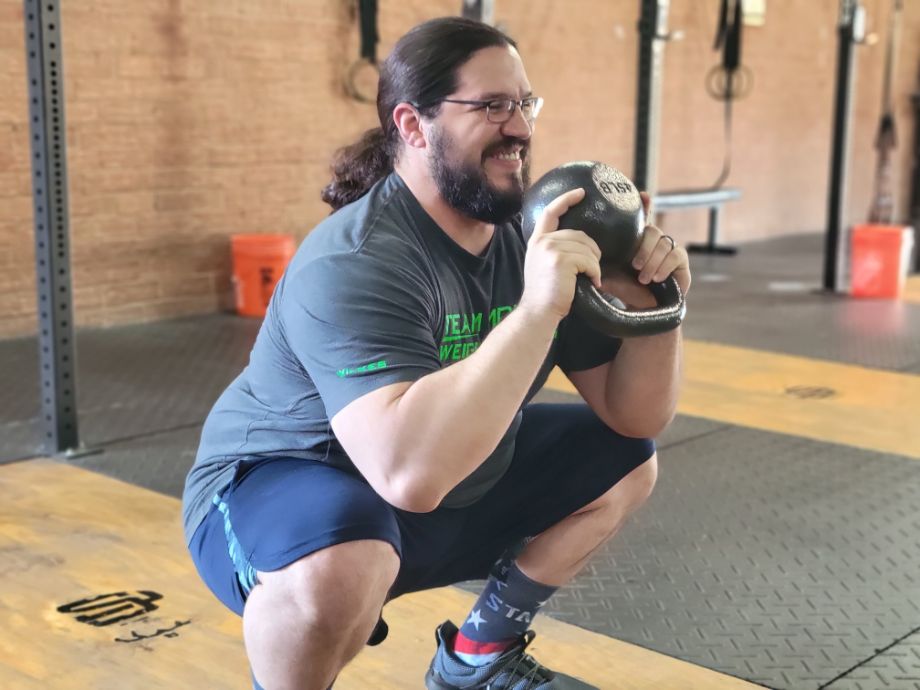
Jumping Power
Squat performance outcomes may lead to an increased ability to jump higher and sprint faster. A British Journal of Sports Medicine3 study found a strong correlation between squatting power and vertical jump heights in athletes.
Squat Workout: Final Thoughts
Whether you love or dislike the squat, no other exercise strengthens the body like it, and it forms the basis of most muscle-building, strength training, and weight-loss routines. The squat exercise is essential if you want to move and look better. Squatting well and regularly will
- Improve your mobility and movement.
- Increase the muscle mass of your lower and upper body.
- Improve your ability to jump higher and run faster.
Now drop it like a squat.
Squat Workouts: FAQs
How many squats are a good workout?
How many squats constitute a good squat workout depends on your goals. If it’s your goal to build muscle or lose fat, three to four sets of six to 12 reps is a great place to start.
What is a good squat workout?
A good squat workout is, again, dependent on your goal. Performing two to five sets of between five to 15 reps is a fantastic starting point if you aim to improve endurance, build muscle, or lose fat.
What do 100 squats a day do?
Performing 100 squats daily with good squat form will help build muscle in your glutes and quads, improve muscular and cardio endurance, boost coordination, and burn calories.
How long should a squat workout be?
The length of your squat workout depends on your load and goals. If you’re performing bodyweight squats intending to improve form and muscular endurance, you’ll need less rest between sets than if the goal is strength. In short, it takes as long as it takes to perform the squat well to meet your health and fitness goals.
References
- Murawa M, Fryzowicz A, Kabacinski J, et al. Muscle activation varies between high-bar and low-bar back squat. PeerJ. 2020;8:e9256. Published 2020 Jun 8. doi:10.7717/peer.9256
- Takai Y, Fukunaga Y, Fujita E, Mori H, Yoshimoto T, Yamamoto M, Kanehisa H. Effects of body mass-based squat training in adolescent boys. J Sports Sci Med. 2013 Mar 1;12(1):60-5. PMID: 24149726; PMCID: PMC3761779.
- Wisløff U, Castagna C, Helgerud J, Jones R, Hoff J. Strong correlation of maximal squat strength with sprint performance and vertical jump height in elite soccer players. Br J Sports Med. 2004 Jun;38(3):285-8. doi: 10.1136/bjsm.2002.002071. PMID: 15155427; PMCID: PMC1724821.
Further reading
In this Healthi app review, our nutrition experts detail their personal experience with the weight loss app so you can decide if it's right for you. Read more

No shaker bottle? No problem. We have some alternative solutions to mix protein powder without a shaker. Read more

Get discounts on leg curl and hack squat machines with our GMWD Fitness promo code. Read more

This Ascent Pre-Workout review covers our experience trying this naturally sweetened and flavored pre-workout supplement that boosts energy without the jitters. Read more

